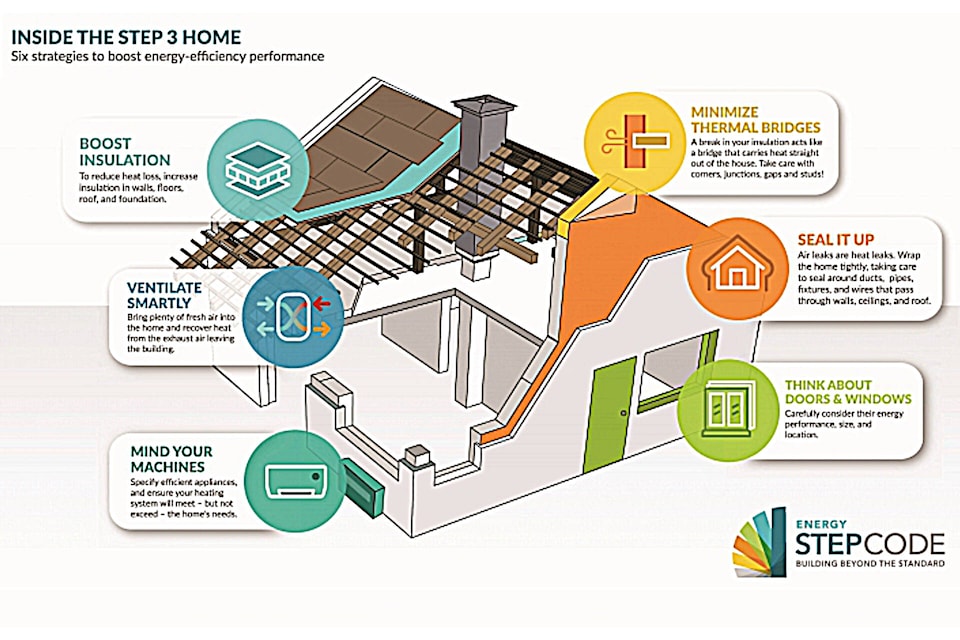Building code changes intended to set higher standards for energy efficiency created some friction at the Columbia Shuswap Regional District (CSRD).
At its May 18 meeting, the CSRD board supported a motion to write a letter to the Ministry of Housing “regarding concerns with additional costs, administration and colder climate application associated with the BC Energy Step Code legislation and the lack of consultation with local governments.”
The motion came from the May 2 Electoral Area Directors meeting, at which a staff report was provided to directors regarding the Step Code which, according to energystepcode.ca, provides an “incremental and consistent approach to achieving more energy-efficient buildings,” with the goal of getting new construction to net-zero by 2023.
The staff report stated local governments must use the BC Energy Step Code “to require a level of energy efficiency in new construction that goes above and beyond the previous prescriptive requirements of the BC Building Code.” Staff noted downsides to compliance include increased construction costs, additional educational requirements and potential design limitations.
“There has been no consultation from the provincial government on this, they’re sending us letters and telling us what they’re doing and telling us we need to figure it out,” commented Area C director Marty Gibbons at the May 18 board meeting. (That) is not consultation, that is direction… This is going to increase the cost of building in Area C, further complicating the ability for people to buy or own housing.”
Gibbons also expressed concern with the latest changes in the BC Energy Step Code requiring an external energy consultant, potentially prolonging the building process.
CSRD development services manager Gerald Christie said Gibbons captured staff’s concerns regarding the Step Code and its latest phase which came into effect May 1.
Salmon Arm director and city councillor Tim Lavery was supportive of the motion, but also of the overall goal of the BC Energy Step Code.
“It does present particular challenges for rural areas and rural municipalities without a doubt, it is going to be more expensive without a doubt, but look around us right now. Smoke. This is about climate change, adapting to climate change and taking steps to get to net zero….,” said Lavery.
Area D director Jay Simpson sided with Gibbons, and questioned the province “telling us we need to do something about housing,” while adding additional time and expense to construction.
Returning focus to the motion, Area D director Dean Trumbley said he was concerned about the impact the changes have on local government, “where the money is going to come from and how we’re going to administer it?”
Area G director Natalya Melnychuk added, “We have future steps to come and we need better support as we go forward to those other steps, and more communication as well from the province…”
Read more: Sicamous council to discuss opting in early to higher energy efficiency building requirements
Read more: Changes to B.C. building code address secondary suites, energy efficiency
lachlan@saobserver.net
Like us on Facebook and follow us on Twitter
Sign up for our newsletter to get Salmon Arm stories in your inbox every morning.
